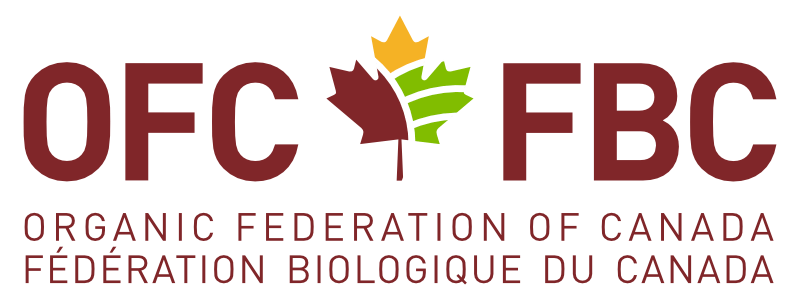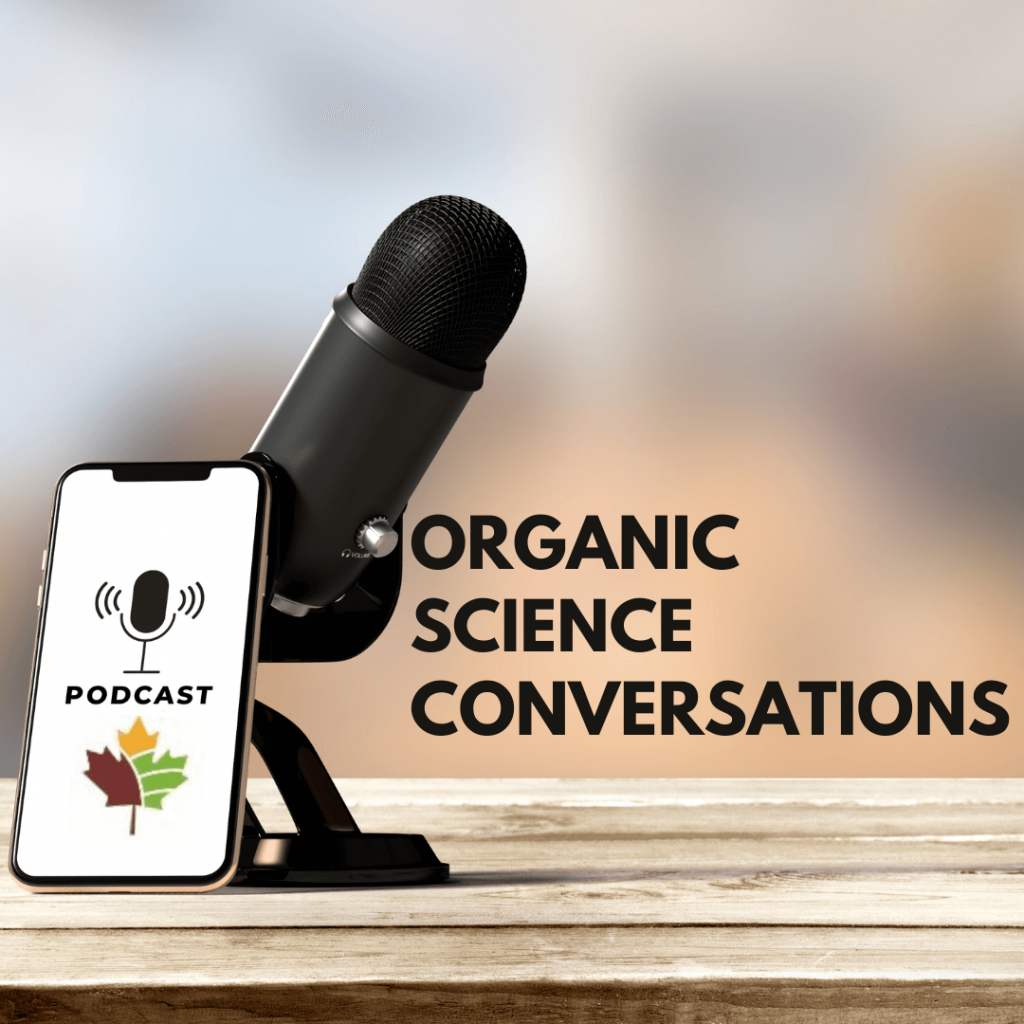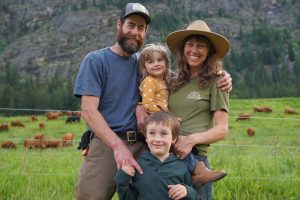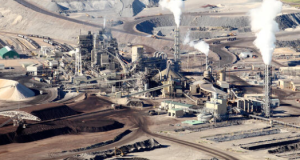Summary
 Martine Dorais, PhD, is a full professor in the Department of Phytology in the Faculty of Agricultural and Food Sciences at Laval University. She holds the Ministry of Agriculture, Fisheries and Food (MAPAQ) Research Chair in organic greenhouse and controlled environments since November 2020. This research chair was created as a part of MAPAQ’s announcement of their greenhouse growth strategy.
Martine Dorais, PhD, is a full professor in the Department of Phytology in the Faculty of Agricultural and Food Sciences at Laval University. She holds the Ministry of Agriculture, Fisheries and Food (MAPAQ) Research Chair in organic greenhouse and controlled environments since November 2020. This research chair was created as a part of MAPAQ’s announcement of their greenhouse growth strategy.
Download the English transcript in PDF format.
Bonjour Martine. What is a research chair?
It is a research program that aims to respond to a specific problem in the sector. The aim of the MAPAQ research chair is to study factor influencing soil and plant health, which are two important aspects of organic farming. This chair includes researchers from different specializations and includes collaboration with 7 other industry partners.
What are the MAPAQ research chair’s main areas of research in greenhouse production and controlled environment?
There are several main areas of interest for this research chair. First is the development of suppressive, ecologically innovative, and sustainable growing media. Second, we are looking at the development of an anaerobic digester for crop residues, with the goal of using them as a source of fertilizer. We are also looking at the development of optimal irrigation strategies that promote soil and plant health. Finally, we aim to have a better understanding of the microbiota of the growing environment and the impact of bio-stimulants on plant resilience to biotic and abiotic stresses (diseases, pests, water stress, etc.).
Can you tell us about the results of your research activities, particularly those under the Agri-Science Clusters program? What are the recent discoveries about fertilization and growth media?
Following numerous trials, we have determined the optimal fertilization and growing media specific to both ornamental and vegetable species. In some cases, even specific to certain cultivars. We tested different fertilization frequencies and doses to determine the optimal management, which favours plant growth and productivity, as well as fruit quality. In evaluating the evolution of growing media over the long term it proved difficult to maintain the optimal characteristics of the growing substrates, as these are altered by continuous fertilizer inputs. Emphasis must be placed on substrates that maintain their physico-chemical characteristics over time.
In addition, we looked at the impact of amendments. For example, biochar not only sequesters carbon, but also reduces nutrient losses. Using this it is possible to reduce soil nitrogen and phosphorus loss by 30 to 40%, in addition to increasing soil biological activity. We also determined the benefits and challenges of intercropping in trials using rocket, tomato, and other stakes.
How could these research results benefit a greenhouse grower who wants to start a growth substrate and maintain it to promote plant growth and productivity? Do you have any recommendations?
We developed a tool for growers to validate mineralization rates over time. We tested this tool during incubations with different organic fertilizers, as well as in a commercial trial. We are now looking to select fertilizers that are better balanced in terms of N-P-K, since animal-based fertilizers do not correspond to the ratio required by the plant. Using improper fertilization ratios can lead to salt build-up in growing substrates, nutritional problems, and over-irrigation. We are now aiming more fine turned fertilization management and selecting fertilizer sources that have a positive effect on the soil microbiota and on the plant.
What research work have you done to recover effluents and reduce the environmental footprint of greenhouse production?
Organic farming systems use a filter marsh approach in order to filter out 99.99% of pathogens present in crop effluents. The filtered effluents can then be reintroduced into the greenhouse or discharged into nature without any environmental impact since the nitrate and phosphate have been removed. This is a very advantageous and inexpensive approach that could be used by all producers to treat their biological effluents loaded with particles of organic matter, which are more difficult to disinfect using the methods allowed in organic agriculture, such as the ozone or thermal approach.
You have also conducted many experiments to determine the best supplemental lighting (types of lamps, distribution methods, etc.). What is the current state of research?
With the new LED fixtures, we can now modify the spectral quality of light. For example, the light can be controlled during the day, which was not previously possible using high pressure sodium (HPS) lamps. By doing this, we are able to change the morphology of the plant, improving the yield and nutritional value of the food. Future research will look to optimize the parameters, which are specific to each species. In past experiments we obtained interesting results using the intra-canopy LED lighting approach. Using a hybrid lighting system that integrates HPS and LED luminaires is recommended, considering the important contribution of HPS lamps to plant head heating throughout the winter.
Would it be possible to reproduce sunlight with artificial lighting and produce fruits and vegetables of the same quality?
Yes, the Organic Science Cluster 3 is conducting trials in greenhouses, growth chambers and commercial environments to study this possibility. We are modifying the spectra and light intensity to optimize the lighting control and obtain an equivalent or even improved product quality. Manufacturers now offer luminaires with the full range of spectra, such as sunlight.
You are also interested in the aspect of heating, another important aspect in Northern climates. Have you obtained convincing results experimenting with geothermal systems?
Yes, we installed a system at Jardins-Nature greenhouses with the goal of maintaining a closed greenhouse almost all the time, keeping all the CO2 inside. Heat exchangers were used to dehumidify the greenhouse, which was kept closed until early summer. This system allowed for better energy control and an improved carbon footprint, as well as better yields. It is a high-performance, inexpensive system that can easily be adapted to smaller scale greenhouses.
How much more productive is greenhouse production than field production?
Greenhouse production can be 10 to 40 times more productive than field production. Mineralization rates must respond rapidly, and the physico-chemical characteristics of the soil must be optimized so that organic amendments can meet the plant’s needs at the right time, avoiding nutrient losses. We want to better evaluate the choice of inputs based on the expected effects on soil microorganisms and the plant’s response to stresses, while promoting good soil health and reducing the energy footprint to zero.
By meeting all the plant’s needs, do our current systems favour “lazy”, less robust plants?
Yes, which is why we are now trying to recreate the plant’s original climate. We can do this by including certain calculated stresses, in order to obtain good vegetable yields, while maintaining desired qualities (e.g. crispy lettuce, tasty tomato). The balance between stress and productivity is more difficult to achieve in organic farming. Nutrients are less available, and the greenhouse climate is regulated differently to avoid, among other things, the spread of pathogens, which are expected to come under increased pressure due to climate change.
Will plants in greenhouses be less sensitive to climate change than those in the field?
Absolutely, and this is why more and more plants are being grown in greenhouses or under cover, although pests still manage to penetrate these structures. However, there are limitations to greenhouse growing, such as during hot summers when it is too expensive to cool them.
You are currently supervising research on blueberry and raspberry production in mega-tunnels on Île d’Orléans. What does this project involve?
We are trying to use tunnels that combine insect barriers as a way to control pest problems in organic field production. These tunnels also allow us to extend the production season. We are studying the effect of 4 types of cover on spectral quality, which in turn influences plant growth, pests, and their predators. The scope of the project makes it possible to characterize the microclimate of the tunnels in a real environment, over large areas of production.
Following your many years of research in Quebec greenhouses, what would be the greenhouse of your dreams?
The greenhouse of my dreams would have to have a neutral environmental footprint, which is possible! All sorts of strategies exist, such as the use of thermal waste, solar energy, or biomass. Greenhouses accumulate 3 times more energy than necessary, so it could be stored, or combined with other buildings to provide energy. The ideal greenhouse for me would be a closed-loop integrated system, both in terms of energy and inputs. Greenhouse growing would be combined with other production (e.g., animal buildings) and waste would be recovered (e.g., bio-digester). And my ideal greenhouse would of course be an organic greenhouse!
Isn’t your goal also to ensure food self-sufficiency in a cold country like Canada?
Yes, and organic greenhouse production allows you to diversify the products offered to consumers. We must design a diversified system, but also, an economically viable system, and external competition is part of the challenge. We have research projects in northern greenhouses, aiming at providing autonomy and food security. There wouldn’t be just one ideal greenhouse model, but realistically several models to develop, depending on the location being used for greenhouse production.
We will be looking out for this! Thank you very much for this interview and we will be following all the projects you plan to implement closely!






